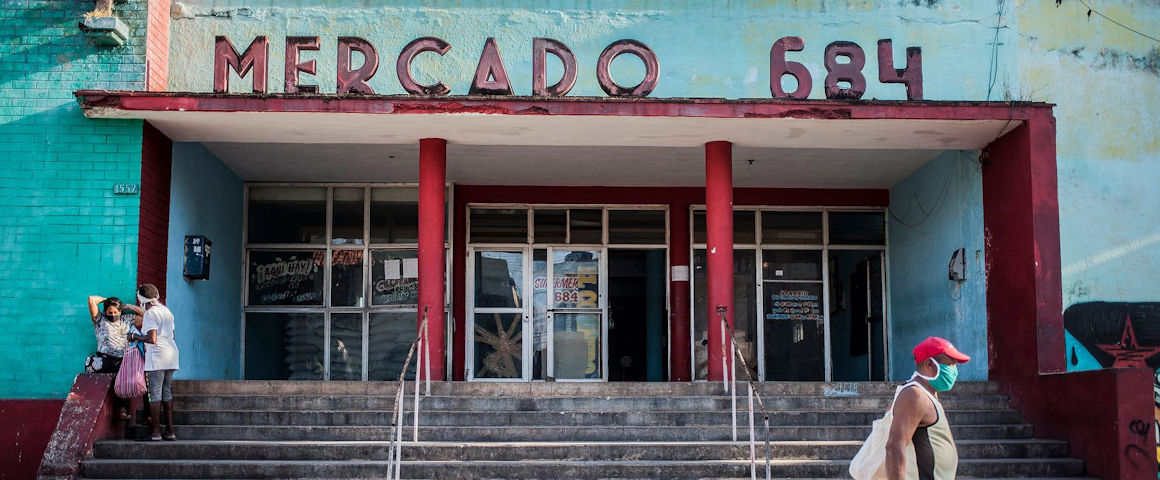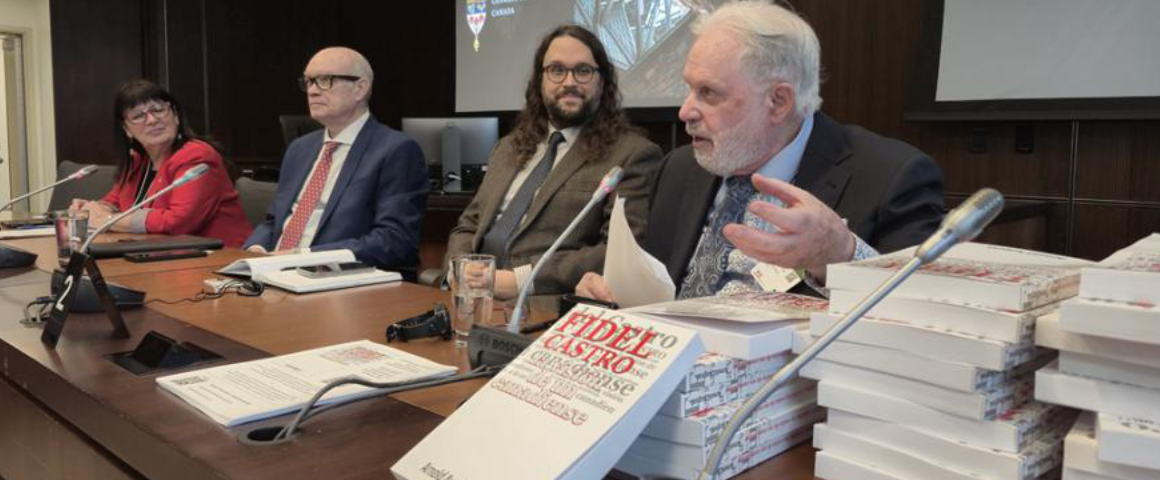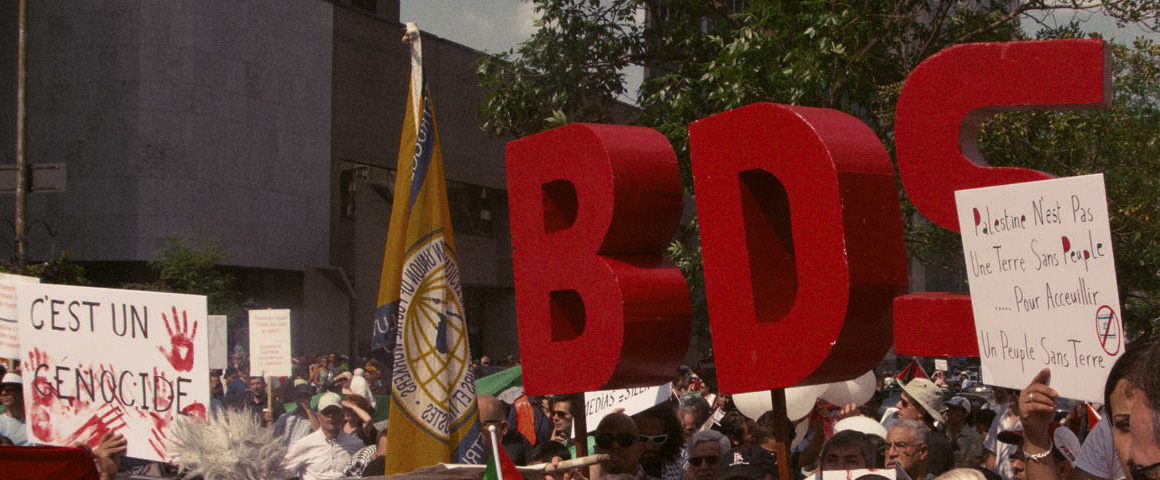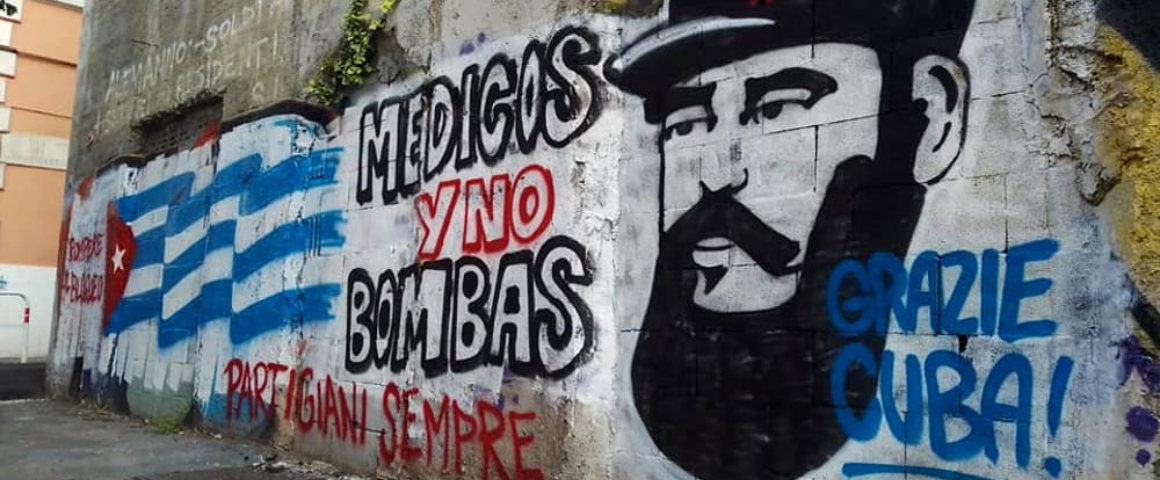By T. Whitney Jr.
Cuba’s Foreign Ministry every year prepares a report on Cuba’s experience with the US economic blockade of the island, in force since 1962. On October 22, Foreign Minister Bruno Rodriguez presented this year’s report at a press conference in Havana. The Ministry releases the reports ahead of an annual vote in the United Nations General Assembly on a Cuban resolution calling for an end to the blockade. Usually, the vote takes place in early November, but because of uncertainties relating to the COVID-19 pandemic, it will next take place in May 2021.
The report is supposed to inform the General Assembly delegates and the public as to the nature of the blockade and its impact on Cuba and the Cuban people. The blockade is the principal tool the United States uses to undermine Cuba’s government. In 1960, a State Department official in the Eisenhower administration expressed its counter-revolutionary purpose. In recommending a blockade, Lester D. Mallory sought “a line of action which … makes the greatest inroads in denying money and supplies to Cuba, to decrease monetary and real wages, to bring about hunger, desperation and overthrow of government.”
The 53-page report covers US measures taken against Cuba and the effects experienced in Cuba and elsewhere during the twelve months between April 2019 and March 2020. It summarizes the US legislation and administrative decrees used to authorize the blockade’s rules and regulations and details US and worldwide opposition to the blockade.
The authors of the report condemn the blockade as cruel and illegal under international law. They speak of genocide, Cuban sovereignty endangered, and Cuba’s economic and social development under assault.
According to the report, the Treasury Department’s Office for Foreign Assets Control (OFAC) levied penalties against dozens of US and third-country entities. Examples are listed. OFAC derives its authority mainly from the Cuban Democracy Act of 1992 which stipulates that third-country companies face penalties on exporting goods to Cuba that contain at least 10 percent US components. In October 2019, the US government applied that rule also to goods exported to Cuba by a country that had imported them from another country.
In September 2019, OFAC sharply limited the dollar amount of remittances Cuban Americans may send to families on the island. On October 23, 2020 – not within the period covered by the Report – the US government ruled that Financiera Cimex SA, Cuba’s sole agency for distributing family remittances to Cubans, was no longer eligible to receive them from the United States. Remittances constitute one of Cuba’s major sources of foreign currency.
The report devotes much attention to the plethora of fines levied against foreign banks and other financial institutions after they handled transactions involving Cuba and the US dollar. It cites dozens of individual examples. Intimidation is now so widespread as to have persuaded many such institutions to avoid dealing with Cuba altogether.
The document highlights US implementation of Title III of the Helms-Burton Law that, beginning in May 2019, has led to lawsuits against foreign businesses brought before US courts on behalf of former owners of nationalized property in Cuba. They are seeking damages. The resulting anxiety among foreign investors has led to “cancellation of commercial operations, cooperation actions, and foreign investment projects.”
Detailing specific examples, the report condemns US penalties imposed on ships, companies, and individuals involved in shipping oil to Cuba. The report’s authors regard that new phase of the blockade as “a qualitative leap in the intensification and implementation of non-conventional measures in times of peace.”
Additionally, the US government has threatened thousands of Cuban doctors working abroad in various ways. Many of the doctors working abroad generate income for the government. The report records the prohibition on cruise ships arriving in Cuba.
The fallout is considerable, especially for the healthcare sector. Dozens of US companies, on being asked, refused to sell medical equipment and drugs to Cuban importers. When purchased through a third-country agent, they are more expensive. And supplies and medications manufactured in third countries may not be readily available on account of the aforementioned ten-percent rule.
Cuba’s fight against COVID-19 took one hit when blockade regulations prevented the unloading in Cuba of a Chinese shipment of donated anti-pandemic supplies, and another one when Swiss manufacturers refused to sell ventilators to Cuba. Cuban food imports are expensive in part because of extra expenses involved with the purchase of US food products, allowed through congressional action in 2000. Blockade-related fuel shortages hamper agricultural production by interfering with planting, transportation and storage.
The blockade has hit education, sports, and cultural development in Cuba. Supplies and fuel are frequently in short supply and transportation and travel are often unavailable. Cuba’s manufacturing and service sector lost an estimated $610.2 million, 7.7 percent more than during the previous year, according to the report. Losses incurred in the bio-pharmacological industry exceeded $160.3 million. US restrictions interfere with Cuba’s export of drugs, vaccines and diagnostic tests.
The report indicates that during the 12-month survey period, Cuba’s tourist industry lost $1.9 billion. Losses stemmed from new US travel restrictions and from prohibitions on tourist services, particularly hotels. OFAC has now prohibited US airlines, or airlines with US connections, from flying into Cuba, except to the Jose Martí Airport in Havana. That action deprived Cuba of an estimated $1.8 billion. OFAC regulations affecting the communications, construction and transportation sectors made for additional Cuban losses. Cuba’s hobbled foreign trade, both imports and exports, registered losses of $3,013,951,129, of which export losses accounted for $2,475,700,000.
According to this report, the workings of the US blockade deprived Cuba of $5,570,300,000 between April 2019 and March 2020—some $1.2 billion more than during the previous year. Among estimates figured into the amount are expenses incurred in buying materials at inflated prices in distant places, losses from foreign sales that never happened, and revenues the crippled tourist industry might have generated. The human cost in lives lost or blunted is not part of the calculation.
The US blockade, with moving interlocking parts that may be at cross purposes, looks like a machine dangerous to human well-being. It could well have provoked the US press and politicians into loud complaints. But near silence has reigned. The absence of real debate signifies overall acceptance of the blockade such that expressions of dissent, even President Obama’s dissent, have gained little support.
Silent acceptance marked other horrors abroad helped along by US agents, especially as they were unfolding, or immediately thereafter. These were killings usually associated with regime change. One recalls Guatemala (1954), Iraq (1963), Brazil (1964) Dominican Republic (1965), particularly Indonesia (1965-1966), Chile (1973), Operation Condor in South America (1975-1976) and Colombia (sporadically from 1964 on).
Anti-communism became the pretext for these situations in which US emissaries abroad characteristically stopped at nothing. In his recent book The Jakarta Method, Vincent Bevins connects US-induced atrocities throughout the Global South, anti-communism and the installation of neoliberal governments.
Reasonably enough, public officials do maintain silence when their governments are complicit with crimes like these. The assumption here is that the US anti-Cuban blockade represents one more instance of resorting to extremes in the name of anti-communism, which, once more, is surrounded by silence.
The anti-Cuban blockade is a substitute for military action. US strategists evidently perceived that military intervention or provocation of an internal coup wouldn’t work to ensure counter-revolution in Cuba. They perhaps realized that well-heeled, entrepreneurial Cubans friendly to the United States wouldn’t be there to help out, most of them having departed the island. Elsewhere in the Global South, as reported by Bevins, their kind stayed put and were able to collaborate with US facilitators to instigate violence.
They are still there, in their various countries, as are their neoliberal regimes. Their staying power validates the US strategic goals pursued in the post-World War II era that were energized by anti-communism. Perhaps political leaders in Washington associated with both major political parties see continued backing of the Cuban blockade as a way of reassuring their far-flung neoliberal colleagues, and the ones nearby, that their old cause is still intact.
[hr gap=”10″]
Get People’s Voice delivered to your door or inbox!
If you found this article useful, please consider subscribing to People’s Voice.
We are 100% reader-supported, with no corporate or government funding.




